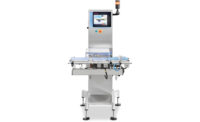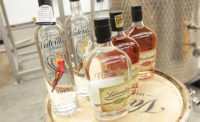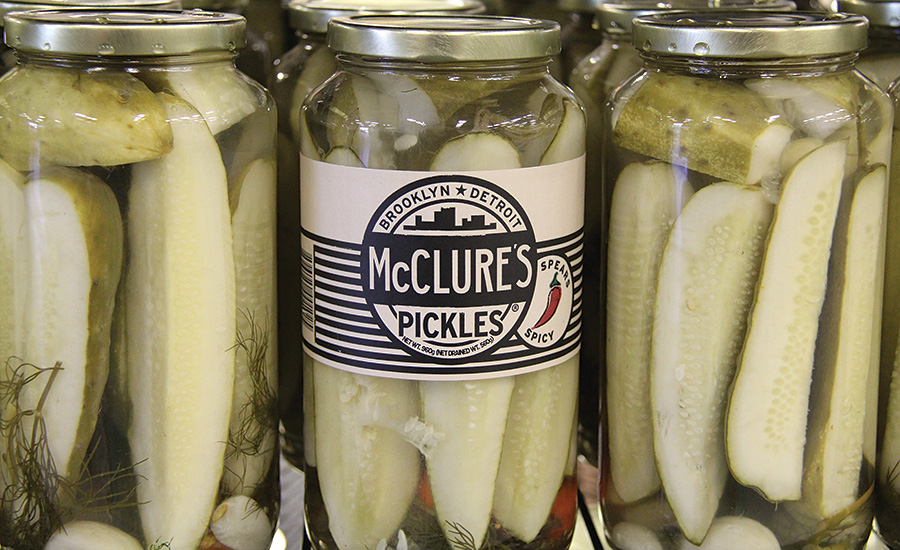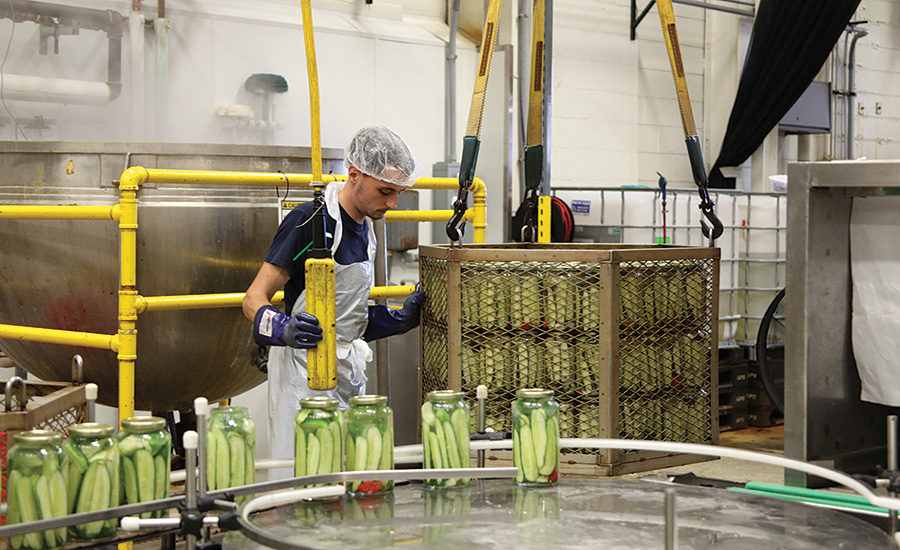Editor's Choice: McClure's
An artisan pickle company shows us it’s processing and packaging line

McClure’s is sold in major grocery store chains, small shops and is featured on bar and restaurant menus, as well as sold internationally.

After the pickles are properly cooled, they are labeled and case packed.

The jars are hand arranged into a large pallet-like crate for pasteurization, which ensures that the pickles are shelf stable, and in the process kills off any harmful substances.



This Detroit, MI artisan pickle brand isn’t your traditional pickle company. Owned by two brothers, Joe and Bob McClure, who employ their parents and other close family members, McClure’s really is a family affair. The brothers, along with their parents, grew up making pickles using their great-grandmother’s recipe. They often gave the pickles as gifts to friends and family, and they were such a hit that people started to ask why they didn’t sell them. It took several years for the brothers to cultivate that idea, thus turning a family tradition into a family company. Now, McClure’s is sold in major grocery store chains, small shops and is featured on bar and restaurant menus, as well as sold internationally.
The company started in 2006, operating out of a 3,000 square foot facility in Troy, MI. It quickly expanded out of that space and currently reside in Detroit in a 20,000 square foot place with plans to expand another 20,000 square feet by 2017. In addition to an expansion in size, the company has plans to purchase more equipment to make the pickle processing and packaging lines a little more efficient. In fact, some of the new machinery is already in the company’s hands, but not yet installed on the line. We traveled to the McClure’s facility to see the line in action and in the hope of getting a pickle sample (spoiler alert: we did).
Packaging pickles starts with local cucumbers
McClure’s currently runs one line with two shifts, five times per week. We arrived at the facility on a Tuesday morning and were given the opportunity to see how a humble cucumber makes its way into a McClure’s branded jar, and eventually a hand-packaged case, in a relatively short amount of time. The cucumbers move into production via conveyer belt, where they are sorted by hand and fed into the slicer, from Urschel (urschel.com). During this process, the cucumbers are sliced into fours, for the pickle spears variety.
Joe McClure, our tour guide, mentioned that they use Michigan cucumbers from about July through September, when they are in season, and then use Florida cucumbers in the fall, and eventually Mexico-grown in the winter. After they are cut into spears, a staff member carries the large bin of cut produce to an area where employees are gathered, filling the clean jars with whichever spices and add-ins make up that flavor. Fresh dill and garlic are added to the jar before the cucumbers and brine.
Each jar, from Ardagh (ardaghgroup.com), with each lid sourced from Crown (crowncork.com), is filled, with almost a pound of produce in each. After the cucumbers are added to the jars, they are then fed down a conveyor to the filling area, where hot brine in large tanks is ready to be added to the jars. The filling machine is an Acasi (acasi.com) filler with eight heads, but is capable of
16 heads. With the eight-heads running, it fills 30-something bottles per minute, but overall, the machine can fill 80-100 jars if needed. The Acasi capper adorns the Crown cap tightly and the bottles are conveyed further down to where they are hand arranged into a large pallet-like crate for pasteurization. This process ensures that the pickles are shelf stable, and in the process kills off any harmful substances.
Machinery helps streamline the process
McClure explained that because of the caustic environment in the plant with the use of so much vinegar, each machine must be built to last in that environment, and be wash-down capable. McClure told us of his plans to add more machinery to the line to streamline the process. McClure will add a metal detector to the line in the next few weeks. In fact, he had already purchased the equipment from Advanced Detection Services (adsdetection.com) and is waiting its arrival. Another new addition will be a pasteurization machine that will eliminate the need to hand stack the bottles. Instead, the bottles would be conveyed into the new equipment for pasteurization and thus would more quickly and efficiently be pasteurized, conveyed and then cooled.
After the pasteurization stage, the jars are lined up on cooling racks and sprayed with cold water, and they are then left alone to cool in front of large fans. After they are properly cooled, they are labeled and case packed. The labeling machine is a pressure sensitive labeler with a hot stamp coder adding the expiration date and batch codes to the label. McClure also said that this is another area where they will revamp their processes in the near future.
Producing more than just pickles
The jars are then case packed by hand and taped shut. Using a Zebra (zebra.com) printer, a product code, date and address is added on the outside of the box. The boxes are palletized by hand and then stretch wrapped using a M.J. Maillis Wulftec (wulftec.com) pallet wrapper. The pallets are then loaded into a truck for third party warehousing. In total, the company produces 10-14 pallets per day of finished product. In addition to pickles, McClure’s makes bloody mary mix and potato chips in pickle and bloody mary flavors. They run the bloody mary line 2-3 times per week at the same facility. The company also runs its foodservice pickles line two times per week, which are distributed to local restaurants, casinos and even sporting event venues. McClure’s potato chips line is kettle-cooked and co-packed at a big name potato chip brand out of state.
McClure’s distributes its products nationally and internationally. The company also have an office and distribution center in Brooklyn, NY. McClure’s has no plans of slowing down as more space and equipment will be introduced in the company’s very near future; these pickles are becoming a household name, and not just in the McClure house.
To watch our video tour of McClure’s, go to: packagingstrategies.com/McClures
Looking for a reprint of this article?
From high-res PDFs to custom plaques, order your copy today!










